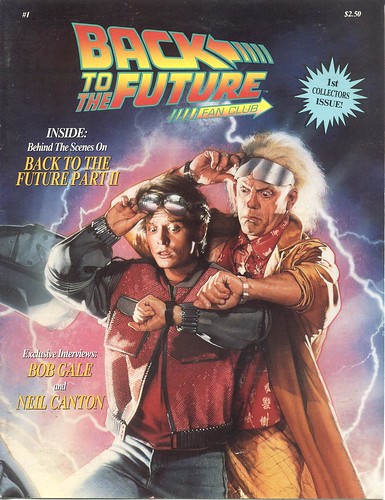Search Results for Tag: energy
Students discuss the German “Energiewende” 1/5
In a few days, international students from the Hertie School in Berlin will be participating in a discussion forum with German Environment Minister Peter Altmaier and Winfried Kretschmann, the Green Party’s first state premier in Baden-Württemberg. The debate will focus on Germany’s “Energiewende,” literally an energy turnaround involving ambitious plans to phase out nuclear power and boost renewable energy.
Starting today until March 13, we’ll be introducing the students taking part in the debate. We begin with Dennis Mwaura from Kenya.
Dennis Mwaura, Kenya from DW_Global Ideas on Vimeo.
Fracking: Promised Land
Following the international premiere of “Promised Land” at the packed Berlinale film festival press conference in Berlin last week, actor Matt Damon said the movie, directed by Gus van Sant which deals with fracking, is a film about American identity but at the same time a global issue.
The film’s international premiere was accompanied by news agencies announcing that Russian gas company and exporter Gazprom plans to cut gas prices for European customers in the billions in 2013. According to several experts, this maneuver could be linked, besides strong competition in the liquefied gas export sector, directly to sinking gas prices: the fracking boom in the US is believed to have already lowered international gas prices even though the US is not exporting gas (yet!) to Europe.
It’s yet another example of the so-called US shale gas revolution that’s already transforming the political global power structure. And it looks like fracking will likely increase globally for geostrategic, power and profit reasons in the next years.
“Promised Land” takes place exactly against this backdrop. It takes an in-depth look at how the industry operates and shows the possible consequences by using an intelligent and precise analogy of a psychological war happening in the US in areas with huge underground gas reservoirs. It focuses on how a nine-billion-dollar corporation tries to get its hand on much-needed land, how they operate psychologically and what alternatives citizens are left with. The film shows how the corporate salesman Steve Buttler (Matt Damon) and his colleague Sue Thomason (Francis McDormand) work hard to buy the village community with some entertaining and clever twists and turns of the plot.
The main aim of the film obviously is to raise awareness among people and to get them to think deeply about the dynamics and consequences of fracking. Matt Damon said after the premiere that if you are searching for more in-depth information about the fracking process you should research online. It would be simply impossible to lay out all the pros and cons of fracking in one feature film but it’s still packed with information.
The movie avoids black and white clichés, but it’s pretty clear that the makers of the film care about the “small people” and how big corporations are trying to manipulate them with scare tactics and playing on existential fears – circumstances which have heightened in the last decades through an unsustainable neoliberal capitalistic system. It is pretty clear that the corporation in the movie is a child of that system and that the same unregulated system produced and created in many ways the situation the village’s residents are in right now: earning less money, living in constant fear of losing their jobs, drowning in debt, not being able to give their children a decent education, not knowing if they can die with dignity.
The film addresses all these issues but it hasn’t been too successful in the US. It remains to be seen how it will fare at the international box office and what impact it will have on the ongoing fracking debate.
Scientists turn trash into crude energy

Remember Doc Brown? That crazy, white haired caricature of a scientist from the 1980s blockbuster scifi comedy Back to the Future? He’s the inventor of a spectacular (and – sadly – fictitious) device called the flux capacitor that is running first on plutonium, later on ordinary household garbage to power a time machine. Here’s what it looks like when Doc Brown is searching for fuel:
Scientists in Denmark have now hit upon a novel way to do just that: producing energy from household waste. While not quite matching Doc Browns achievement when it comes to the amount of energy harvested (let alone building a time machine) the scientists’ feat is impressive enough: Feeding biomass (comprising anything from sewage, compost, household garbage or waste from meat and dairy production) into what is essentially a 400 °C hot pressure cooker they managed to create something very close to fossil crude oil. What’s more, the production process used is more energy efficient than any other way of getting energy out of biomass.
We figure, if the Danish research team is still unhappy with the energy yield of their trash, they only have to wait another two years for expert help: In Back to the Future – Part II we learn that Doc Brown is going to visit us in 2015.
Fracking in a Nutshell (Part 5)
We’re ending our blog series about the hydraulic fracturing method with a selective overview about particular occurrences connected with fracking which may lead you deeper into the layers of the fracking process.
# The movie “Gasland” by director Josh Fox in 2010, has become a popular basis for discussions about fracking. The director and activist set a milestone with his work, raising some key questions that marked the public discussion in the US. Perhaps we can mention two specific incidents to underline the far-reaching impact of his work.
# The Independent Petroleum Association of America felt obliged to send a detailed public letter to the Oscar Academy of Motion Picture Arts and Sciences in February 2011. It was a reaction to the Oscar nomination for “Gasland.” The eight-page paper which contradicts every single theory in the film about the harm and damage resulting from fracking ends laconically with the words: “Anything we miss? Guess we’ll be seeing you at the movies. Maybe not this one, though.”
# The IPAA financed a documentary which has been available on the internet since June 2012 and which contradicts every premise of Gasland, it’s called Truthland.
# At the beginning of 2012, the New York Times gathered and published with a short statement hundreds of leaked intern industry e-mails, which showed the majority were sceptical about the fracking boom: “Over the past six months, The New York Times reviewed thousands of pages of documents related to shale gas, including hundreds of industry e-mails, internal agency documents and reports by analysts. A selection of these documents is included here; names and identifying information have been redacted to protect the confidentiality of sources, many of whom were not authorized by their employers to communicate with The Times.”
# Environmental activist Erin Brokovich called fracking not specifically “longterm solution-driven” in a TV interview in August 2012 as she gathered a ton of e-mails from anxious US citizens living in areas which might be affected by fracking and as she claimed: “Let’s stop the bullshit and get down to finding some solutions to our problems.”
# Recently “Promised Land,” the first Hollywood fiction film about fracking was released in US cinemas and led to a huge discussion even before it was shown to the public. “The energy industry is worried that it will be presented in a critical light and is preparing possible responses, such as providing film reviewers with scientific studies, distributing leaflets to moviegoers and launching a ‘truth squad’ initiative on Twitter and Facebook,” the Journal said.
Additionally, here are some international events connected with fracking which one might not necessarily have expected.
# Speculations say Russian oil company Gazprom is interested in seeing an European fracking ban. “Some predict what was once unthinkable: that the U.S. won’t need to import natural gas in the near future, and that Russia could be the big loser.”
# It is said that Exxon Mobil thanks to fracking became fond of Siberia:
“According to reports, the Russian government is placing its hopes on Exxon Mobil to help it unlock oil trapped in the Bazhenov shale formation in Western Siberia. Estimates say that the block could 13 billion barrels of oil and Rosneft and Exxon are targeting old fields in the region that no longer produce oil.”
# Several Indian farmers supposedly “profit” from the Fracking Boom:
“US companies drilling for oil and gas in shale formations have developed a voracious appetite for the powder-like gum made from the seeds of guar, or cluster bean, and the boom in their business has created a bonanza for thousands of small-scale farmers in India who produce 80 percent of the world’s beans.”
# Famous artists such as Yoko Ono, Sean Lennon and Susan Sarandon are campaigning against fracking. They are touring together through different US states to discuss the issue.
# Fracking finally has also entered popular fiction: Comics, romance novels and Grisham-esque thrillers are already dealing with it.
It’s fair to say that fracking is unlikely to disappear in the upcoming years in the global energy supply discussion. Whether you want to get deeper into the subject, campaign against it or are simply interested in the economic outcome, we hope the blog gave you a good overview of the subject.
What’s the Ecofinder “SLE-MEETING”?
 If you read my last posts, you may figure out the solution by yourself. “SLE” is an abbreviation for our successful program “Solar Lamp Entrepreneurs.” These entrepreneurs charge their solar lamps every day and rent them out each night. Their customers don’t have access to electricity. They come regularly to rent the lamps and even order them in advance to ensure they get one of the much sought-after gadgets.
If you read my last posts, you may figure out the solution by yourself. “SLE” is an abbreviation for our successful program “Solar Lamp Entrepreneurs.” These entrepreneurs charge their solar lamps every day and rent them out each night. Their customers don’t have access to electricity. They come regularly to rent the lamps and even order them in advance to ensure they get one of the much sought-after gadgets.
The reason for the huge demand is quite simple – the solar lamps are brighter, cheaper and, most importantly, safer than the commonly used kerosene lamps. That allows children to read, learn or do their homework even late in the evening. But the lamps also help their parents since they make it easier to work at night and perhaps earn more money for the family.
At the end of last year, we organized our SLE-Meeting. The aim was to give our SLEs the chance to share their experiences and to get more people involved in the project. Of course, it was also great that our new potential SLEs could learn directly from the more experienced ones. It was very interesting to hear what they had to say, both good and bad. In one worst case, someone’s solar panel had been stolen while charging the lamp. On the other hand, one of our Solar Lamp Entrepreneurs has already employed someone to reach out to more people in other areas. Overall, the meeting was a success. Four new SLEs were added to the solar lamp rental project. Each of them got ten lamps as a loan. That means we distributed 40 lamps and, in addition, some of the more experienced SLEs bought new lamps. So the number of solar lamps in this project increased to 200.
We are proud of this number and want to raise it further in 2013. But personally, I want to focus more on selling the solar lamps directly to customers. That’s because for them, the solar lights bring the most financial benefits if they own the lamps themselves.
More about this issue the next time.








Feedback